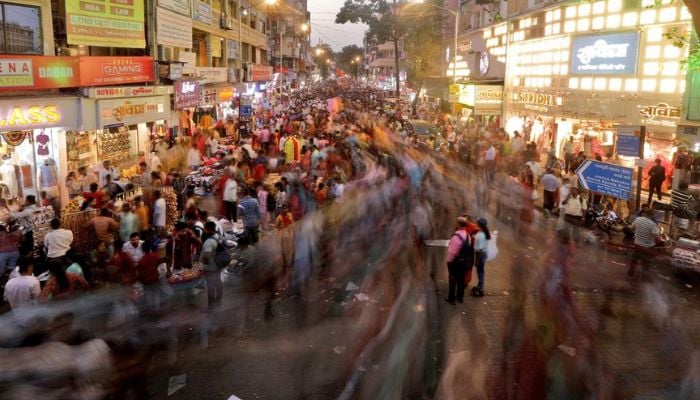[ad_1]

A variety of demographic challenges, including birth rates and labour markets, are emerging as significant themes to watch out for in the two Asian powerhouses as India overtakes China as the world's most populated country.
While China, which is ageing, is anticipated to have slower growth following years of strong expansion, India, with its largely young population, is on track to be the fastest-growing economy in the coming years, Bloomberg reported.
China, whose stringent one-child policy until 2016 kept birth rates in check, will witness a decline in the number of people of working age during the next century as the country's elderly population rises to more than 40%. When compared to India, where 2.3 billion people are expected to live by 2100, those 65 and older will make up less than a third of the population.
That does not mean that India's future is entirely rosy.
The outlet reported that a little over 12 million people enter the labour market each year looking for work and half of the population is under the age of 30. India's challenge is to maintain this rate of growth in the upcoming decades in order to avoid experiencing even greater unemployment rates. India is predicted to expand by 7% in the year ending in March.
While India touts its demographic dividend, a crucial statistic — women's employment and contribution — is rarely mentioned in the press. Slightly more than in Afghanistan, women make up only a fifth of the labour force overall. China, on the other hand, has a workforce that is 44.8% female.
Despite having a far smaller middle class than China, firms wishing to relocate there are drawn to India because of the cost-effectiveness of its workers.
In a victory for Prime Minister Narendra Modi's “Make in India” drive, Apple started producing its most recent iPhone models in the South Asian country. However, there were others that left, including General Motors and Harley Davidson, undermining Modi's ambition to increase manufacturing's contribution to the GDP from its current 14% to 25%.
Unlike China, India's population is still primarily rural.
According to projections from UN-Habitat, the majority of Indians will continue to live in the hinterland by 2035, while the majority of Chinese people will become more urbanised. This is despite the fact that workers from both countries are moving to megacities in search of better opportunities.
[ad_2]
Source link


